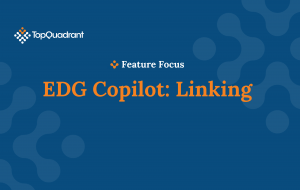Mastering SPARQL: Unlocking Knowledge Graph Queries for the Enterprise

Summary
In the era of data-driven enterprises and knowledge graphs, SPARQL – the SPARQL Protocol and RDF Query Language – emerges as a fundamental tool for querying linked data and driving insights across heterogeneous systems. This article explores what SPARQL is, how it works, where it fits into enterprise metadata ecosystems, and how organizations can adopt the language to advance data governance, metadata management, and real-time decision making.
What is SPARQL?
The term SPARQL stands for SPARQL Protocol and RDF Query Language. Pronounced “sparkle,” it is the standardized query language and protocol defined by the World Wide Web Consortium (W3C) for querying data that is represented in the Resource Description Framework (RDF) format. In simpler terms, if SQL is the standard for relational databases, SPARQL is the equivalent for graph-structured RDF data.
Whereas relational systems rely on fixed schemas and tables, RDF and SPARQL enable flexible modelling of entities, relationships and properties – making SPARQL a key query mechanism in knowledge graph, metadata management and semantic-web contexts. Because many enterprises are now deploying large graphs – metadata graphs, enterprise knowledge graphs, regulatory ontologies – SPARQL has become a strategic enabler for extracting insights from that graph-centric data layer.
Why SPARQL matters in enterprise metadata and knowledge graphs
For organizations operating large-scale metadata platforms, data-governance initiatives and ontology-driven solutions, it offers three major value drivers:
Flexible query across heterogeneous data
RDF enables representation of data from multiple systems, with relationships expressed in a graph. SPARQL supports graph patterns, optional queries, federated queries across endpoints, and more. This means enterprises can query across silos without rigid schema binding.
Enabling knowledge graph exploration and discovery
With knowledge graphs that represent business, domain and operational metadata, SPARQL acts as the exploration layer: enabling users or systems to ask questions like “which assets link to this regulatory concept”, “what systems feed this process”, or “what data lineage leads from source to consumer”.
Supporting metadata governance, compliance, and analytics
In regulated industries (life sciences, financial services) where metadata, lineage, taxonomies, and ontologies are essential, SPARQL gives a means to query, validate and report on governance commitments. For example, you might use it to detect missing classifications, inconsistent relationships, or ungoverned uses of data.
Given that TopQuadrant’s focus is on scalable metadata management, enterprise ontology, and data-governance solutions, SPARQL becomes a foundational query technology in that architecture.
How SPARQL works: core concepts and query forms
Understanding SPARQL requires familiarity with the RDF data model and the query syntax it supports. Below we outline the core concepts and then highlight the primary query forms that it supports.
RDF data model in brief
RDF models data as triples: subject – predicate – object. Each triple is a statement: the subject has a property (predicate) whose value is the object. For example:
<http://example.com/asset123> <http://example.com/ontology#hasOwner> <http://example.com/person456>
Variables in SPARQL queries are bound against these triples and graph patterns.
SPARQL query forms
Several forms tailored to different use-cases are supported.
- SELECT: Returns tabular results (variables bound to values) similar to a relational query.
- CONSTRUCT: Returns an RDF graph constructed from the results of the query – useful when you want to derive or reshape a graph.
- ASK: Returns a simple true/false answer to whether a given pattern exists.
- DESCRIBE: Returns an RDF graph describing the resources matched by the query; behavior can vary by endpoint.
These query forms enable both analytical querying and graph-shaping operations in the context of enterprise metadata environments.
Basic SPARQL syntax example
Here is a simplified example of a SPARQL SELECT query to find names and emails of persons in a graph:
PREFIX foaf: <http://xmlns.com/foaf/0.1/>
SELECT ?name ?email
WHERE {
?person a foaf:Person .
?person foaf:name ?name .
?person foaf:mbox ?email .
}
This example demonstrates variable binding (?name, ?email), triple patterns, and the use of a prefix for compact URIs.
Advanced capabilities: OPTIONAL, FILTER, GRAPH, service endpoints
As graphs grow in size and complexity, SPARQL provides additional capabilities:
- OPTIONAL allows inclusion of triples only when present, avoiding exclusion of resources wholly if some property is missing.
- FILTER supports additional conditions (numeric, string, logical) on variable bindings.
- GRAPH supports named graphs so that queries may target specific graph contexts within a triplestore.
- Federated queries (across multiple SPARQL endpoints) allow queries that span different data stores or organizations.
These features help enterprise metadata platforms handle federated, distributed, or versioned graphs.
SPARQL in the context of TopQuadrant’s architecture
At TopQuadrant we address metadata management, ontology modelling, data governance and semantic services. The role of SPARQL in that architecture can be described via the following three zones:
Metadata capture and ingestion
When metadata, lineage, taxonomies, vocabularies or ontologies are loaded into a metadata repository, they are commonly represented in RDF or converted into RDF/OWL format. Once the metadata is expressed in RDF, SPARQL becomes the standard query mechanism to explore, validate, harmonize and report on that metadata.
Operational metadata services and APIs
TopQuadrant’s architecture supports semantic services and APIs that expose metadata assets, relationships and business context in a graph-enabled way. SPARQL endpoints can serve as direct API surfaces for metadata colleagues or applications to query, explore and integrate metadata results into downstream systems.
Governance, analytics and insight
With enterprise metadata and ontology in place, governance use-cases like “identify unmanaged data assets,” “trace lineage from source to consumption,” or “validate taxonomy alignment” can all be implemented via SPARQL queries. SPARQL thus becomes a powerful tool in governance dashboards, compliance audits and data-governance automation.
Using SPARQL in this way aligns with TopQuadrant’s broader proposition around enterprise metadata management and ensures that organizations leverage graph-enabled metadata, not just as static artefacts but as queryable, live services.
Common enterprise challenges and how SPARQL addresses them
In real-world metadata and knowledge-graph initiatives, organizations frequently encounter these pain points:
Challenge: Fragmented metadata silos
Many organizations manage metadata across legacy systems, spreadsheets, relational databases and disconnected tools. Integration and unified querying is difficult.
SPARQL solution: By modelling metadata in RDF and exposing a SPARQL endpoint, disparate metadata can be unified into a graph layer, making it queryable via a common language.
Challenge: Poor visibility of relationships and lineage
Understanding how data assets, systems, processes, regulations and taxonomies interconnect is key for governance, but relational or spreadsheet models struggle to express dynamic relationships.
SPARQL solution: Graph modelling combined with SPARQL allows relationship-centric queries – e.g., traverse an asset’s consumption paths, show dependencies, trace regulatory linkage – or detect orphan nodes in metadata graphs.
Challenge: Manual reporting and ad-hoc queries
Governance teams often rely on manual spreadsheets or static reports to answer “which assets are ungoverned” or “what are open regulatory risks,” which limits agility and repeatability.
SPARQL solution: Once key governance questions are framed as SPARQL queries, they can be embedded into dashboards or metadata services, enabling automated detection, reporting and even proactive alerting.
Challenge: Scalability and federation across systems
Enterprise metadata often spans cloud, on-prem, partner systems and diverse tooling, making scaling and federated querying tricky.
SPARQL solution: SPARQL supports federated queries (multiple endpoints) and graph traversal across distributed stores, enabling unified querying at scale.
By deploying SPARQL within a metadata-governance framework, organizations can shift from passive data catalogues toward active, graph-driven governance.
Best practices for adopting SPARQL in enterprise metadata initiatives
To maximize the value of SPARQL and avoid common pitfalls, we recommend the following best practices:
Design a clear ontology and graph model
Before you write SPARQL queries, ensure the underlying metadata graph is well-modeled, with consistent URIs, meaningful predicates, typed classes and versioning. Good modeling supports cleaner queries and more maintainable services.
Establish a SPARQL endpoint architecture
Deploy one or more SPARQL endpoints that are secure, performant and aligned with enterprise SLA (service-level agreement) requirements. Consider workload patterns (ad-hoc queries vs APIs) and caching or materialization for complex queries.
Define curated query libraries for governance use-cases
Rather than relying on ad-hoc queries, build a library of common SPARQL queries that support governance, taxonomy validation, lineage tracking and risk detection. Provide documentation and training for metadata teams.
Monitor query performance and resource usage
Graph queries can span large datasets and may involve path traversals, optional patterns or federated endpoints. Monitoring and tuning are important: optimize filters, limit result sets, avoid unbounded graph traversals, and consider query timeouts.
Embed SPARQL results into dashboards and services
The real value of SPARQL is when results are integrated into governance dashboards, metadata portals or operational workflows. Use SPARQL queries as APIs to deliver live metadata insight rather than static reports.
Ensure robust security and governance for endpoints
Because SPARQL endpoints expose metadata and often cross enterprise borders, ensure authentication, authorization, quotas and logging are in place. Governance metadata itself must be governed.
When these best practices are applied, SPARQL becomes a powerful enabler of enterprise metadata management rather than a niche tool.
Two common SPARQL use-case patterns
Below are two targeted use-case patterns that enterprises frequently adopt when leveraging SPARQL. These illustrate concrete scenarios that metadata/ontology teams can implement.
Use-case: Data asset lineage discovery
In this scenario metadata teams want to trace how a data asset flows from source system to consumption (reports, dashboards, analytic models). A SPARQL query might:
- Identify the data asset (subject) in the metadata graph.
- Traverse relationships to the source system, transformation processes, and downstream consumers.
- Return the full path of dependencies, including any missing governance tags or controls.
This use-case enables governance teams to answer questions like: Which assets feed the model? Which assets lack classification? Are there any uncontrolled transformations?
Use-case: Regulatory taxonomy alignment check
In regulated industries, organizations maintain taxonomies or ontologies of regulatory concepts (e.g., GDPR, Basel, HIPAA). A SPARQL query might:
- Match all metadata assets tagged with a regulation concept.
- Identify assets that are missing required controls or links to the taxonomy.
- Generate a summary of assets whose metadata relationships are incomplete or inconsistent.
This enables proactive risk detection and audit readiness by surfacing unmanaged or poorly classified assets within the metadata graph.
These patterns highlight how SPARQL enables direct value in metadata governance, compliance and knowledge-graph operations.
Why SPARQL is strategic for the next decade of metadata-driven enterprises
As enterprises evolve beyond traditional relational and document stores into rich knowledge graphs, the need for expressive, scalable query languages grows. SPARQL is positioned to play a strategic role because:
- It enables graph-centric querying across metadata, ontologies, taxonomies, data lineage and operational knowledge.
- It supports federated queries and interoperability across domains and systems.
- It empowers teams to move from descriptive metadata (what exists) to prescriptive insight (what should be done) by enabling dynamic queries, modelling and reporting.
- It aligns with semantic-web, knowledge-graph and linked-data best practices, enabling future-proof architectures.
For organizations investing in metadata as a strategic asset, SPARQL becomes not just a tool but a capability: a way to derive insight and governance across connected data. The ability to query, traverse, and shape metadata graphs gives enterprises agility, transparency and control in a data-intensive world.
Getting started with SPARQL in your organization
If you are ready to begin the SPARQL journey, consider this phased approach:
Pilot a SPARQL endpoint
Choose a small metadata domain or ontology fragment. Model it in RDF, set up a triplestore, expose a SPARQL endpoint and test simple queries (SELECT, ASK) for exploration.
Build a query library for key governance questions
Identify 5-10 high-value governance or analytics questions (e.g., “Which assets are missing business glossary terms?”, “Which processes consume unclassified data?”) and implement SPARQL queries for them.
Embed SPARQL results into metadata services and dashboards
Use SPARQL endpoints as live APIs feeding metadata portals, governance dashboards or alerting workflows.
Govern and monitor your SPARQL infrastructure
Ensure you have proper monitoring, security, documentation, query-performance management and governance for the graph layer and SPARQL endpoints.
Scale to enterprise knowledge graph and federated queries
Expand your metadata model to cover multiple domains, federate SPARQL endpoints if needed, and focus on reuse of query libraries and ontology services.
By following this approach, you can move from experimentation to operational metadata governance powered by SPARQL.
Conclusion
The query language SPARQL is a linchpin in enterprise metadata, ontology and knowledge-graph strategies. For organizations leveraging metadata as a strategic asset – especially in regulated industries such as life sciences and financial services – it offers a robust way to query, explore and govern graph-based metadata systems. When integrated into a broader metadata platform like TopQuadrant’s, SPARQL enables operational insight, governance automation and analytics that go far beyond static metadata catalogues. If your enterprise is ready to move to the next generation of metadata management, SPARQL delivers the query layer that bridges graph modelling and practical governance.
If you would like to learn more about how TopQuadrant leverages SPARQL within our solutions for enterprise metadata management and knowledge-graph services, please explore our metadata-management page and ontology services page (internal links provided above) or contact our team for a demonstration of SPARQL in action.
-
Data Governance65
-
Vocabulary Management9
-
Knowledge Graphs42
-
Ontologies15
-
Data Fabric8
-
Metadata Management17
-
Business Glossaries6
-
Semantic File System9
-
Reference Data Management7
-
Uncategorized2
-
Data Catalogs15
-
Datasets11
-
Taxonomies4
-
News5
-
Policy and Compliance5
-
Life Sciences6
-
Automated Operations6
-
Financial Services9
-
AI Readiness22
-
Podcasts1


